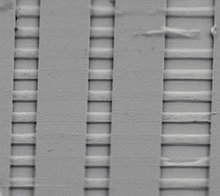A new research by Chris Marianetti from Columbia University tries to find out how and why does graphene break. Marianetti has revealed the mechanisms of mechanical failure of pure graphene under tensile stress. When graphene is subject to strain equal in all directions, it morphs into a new structure which is mechanically unstable.
Marianetti says this failure mechanism is a novel soft-mode phonon instability. A phonon is a collective vibrational mode of atoms within a crystal, similar to a wave in a liquid. The fact that a phonon becomes "soft" under tensile strain means that the system can lower its energy by distorting the atoms along the vibrational mode and transitioning to a new crystalline arrangement. Under sufficient strain, graphene develops a particular soft-mode that causes the honeycomb arrangement of carbon atoms to be driven towards isolated hexagonal rings. This new crystal is structurally weaker, resulting in the mechanical failure of the graphene sheet.
 Xolve (previously Graphene Solutions) announced that it has raised $2 million in funds, from both strategic and financial investors. The company is working to commercialize intellectual property that enables simple room temperature processing of graphene and other nanoparticle composites, solutions and coatings.
Xolve (previously Graphene Solutions) announced that it has raised $2 million in funds, from both strategic and financial investors. The company is working to commercialize intellectual property that enables simple room temperature processing of graphene and other nanoparticle composites, solutions and coatings.
